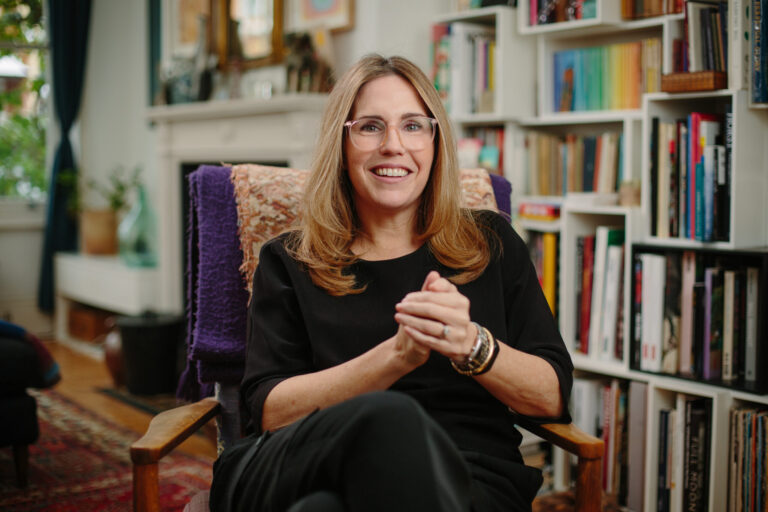Season 3: Building business resilience
The Power of Sustainable Fashion: A Competitive Edge

In today’s increasingly eco-conscious consumer landscape, sustainable fashion has rapidly emerged as a powerful force within the industry. It’s not a fleeting trend but a transformative wave that is reshaping the way fashion brands connect with their customers. This blog explores how sustainability is not only a responsible choice for the planet but also a means of differentiation for your brand in the ever-evolving fashion sector.
Over the past decade, consumer preferences have undergone a remarkable shift towards sustainability. When I started my sustainable fashion brand, Encircled in 2012, few customers inquired about our fabric sourcing and content. Fast forward to today, and we receive daily questions about the origins of our yarns. Shoppers are now prioritizing quality over quantity and are acutely aware of the ecological and social impacts of their purchases. In a recent survey conducted by my brand, over 38% of respondents expressed reduced shopping frequency, satisfied with their current wardrobes. Brands are needing to adapt their practices and marketing to thrive in this evolving landscape.
Sustainability in fashion addresses the industry’s considerable environmental footprint, spanning the entire product life cycle. From raw material sourcing to dyeing, fabric creation, manufacturing, shipping, and end-of-life disposal, fashion has far-reaching ecological implications. Sustainable fashion goes beyond aesthetics, deeply influencing production choices and practices.
The sourcing of raw materials is a complex aspect of sustainability. There is much grey area when it comes to what’s sustainable versus not. New technologies have introduced innovative and eco-friendly materials, from recycled plastics to newer fibres like beech tree pulp and yarns made from coffee grounds. While these materials can be costly, their use offers a competitive advantage while not compromising on quality, durability or comfort. Sustainable fabrics allow brands to transparently share the environmental impact of their products, such as carbon footprint and water usage, with consumers.
Production and manufacturing have substantial environmental and social consequences. Over the years, clothing retail prices have decreased on average 2.5x while input costs have risen, thereby squeezing the cost of making clothing- and mostly the wages of those who sew our clothing. Many brands source from countries with lower labour rates and a lack of living wage infrastructure and regulation, which exploits workers and perpetuates the poverty cycle. A competitive edge lies in working with factories who offer fair wages and fair trade certifications. This resonates with consumers who overwhelmingly reject slave labour in fashion.
Efficiency in pattern layout during production significantly affects fabric yield and waste generation. Sustainable brands prioritize efficient marker-making to minimize fabric waste, saving money and reducing their carbon footprint. Excess fabric cuttings can be repurposed into additional products, demonstrating resourcefulness and sustainability. For example, at my brand, Encircled we repurpose excess production cuttings into saleable goods like scrunchies, hair ties and headbands.
Re-embracing local production offers environmental and strategic benefits. Today, in the United States, less than 2% of clothing is domestically made, making local production a unique selling proposition. It reduces the environmental footprint from freighting or flying clothing from overseas, enables smaller batch production, ensures better quality control, and fosters closer supplier relationships. Local production allows for quick problem-solving and minimal waste.
The end-of-life cycle of fashion is very impactful. The average US consumer throws away approximately 81.5 pounds of clothing per year, with 85% of that heading directly to a landfill. Fashion brands can further contribute to circularity by integrating resale platforms or recycling programs. This unique selling proposition not only engages consumers but also reduces clothing waste in landfills. Innovative software platforms like Treet or Recurate make it easy for brands to establish resale experiences, creating a win-win situation for consumers and businesses.
While becoming more sustainable as a brand is a commendable path, it does come with a set of challenges. More sustainable choices in materials, packaging and production come at a higher cost. For example, at Encircled re placed plastic garment bags with plant-based compostable alternatives which increased the cost threefold. Sustainable fabrics are also generally more expensive, up to 2-3 times more per yard. However, you cannot underestimate the intrinsic value of doing the right thing. With more customers looking to shop sustainably, these efforts do not go unnoticed. This fosters stronger brand affinity in a saturated market like fashion.
As consumers continue to pivot their purchasing power towards more sustainable brands, those brands that are at the forefront of leading this change, have a massive competitive advantage. As discussed, there are many areas along the journey of making a product that offer waste and carbon footprint reduction opportunities. Moreover, regulators in many countries are starting to look at ways to make conscious business practices mandatory. Despite the on-cost and challenges with weaving sustainability into your supply chain, these are investments that resonate with a more conscious consumer, and help to contribute to using your business as a force for good in the world. In this fiercely competitive landscape, sustainability is not just a choice; it’s a commitment to creating a brighter, more responsible future.





Leave a comment